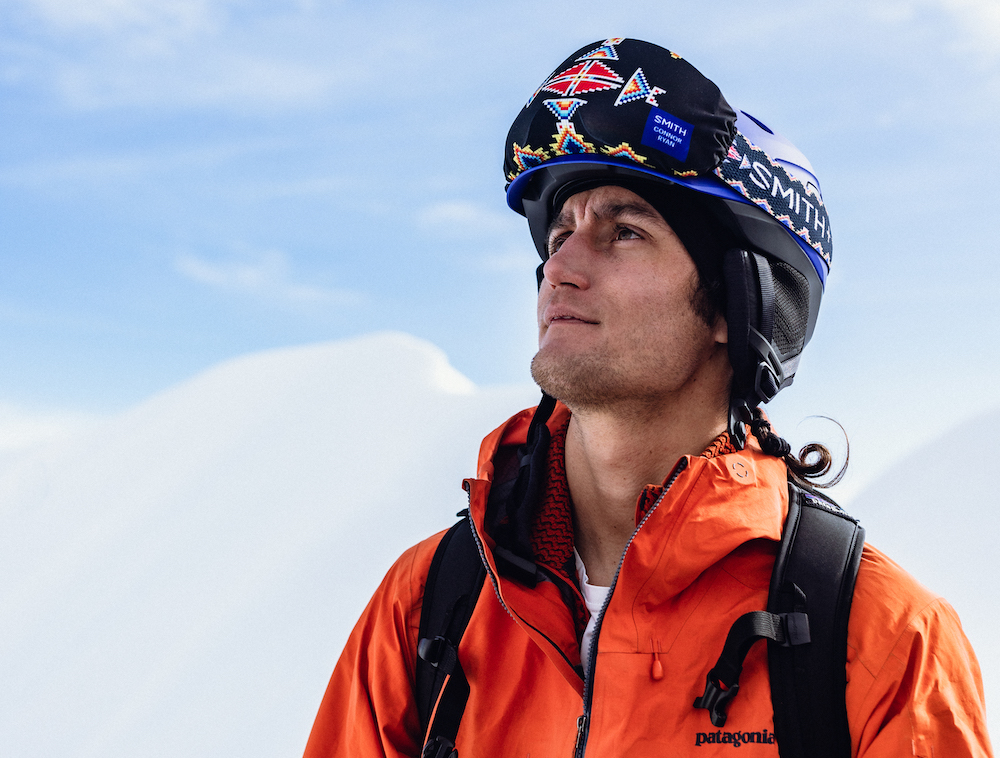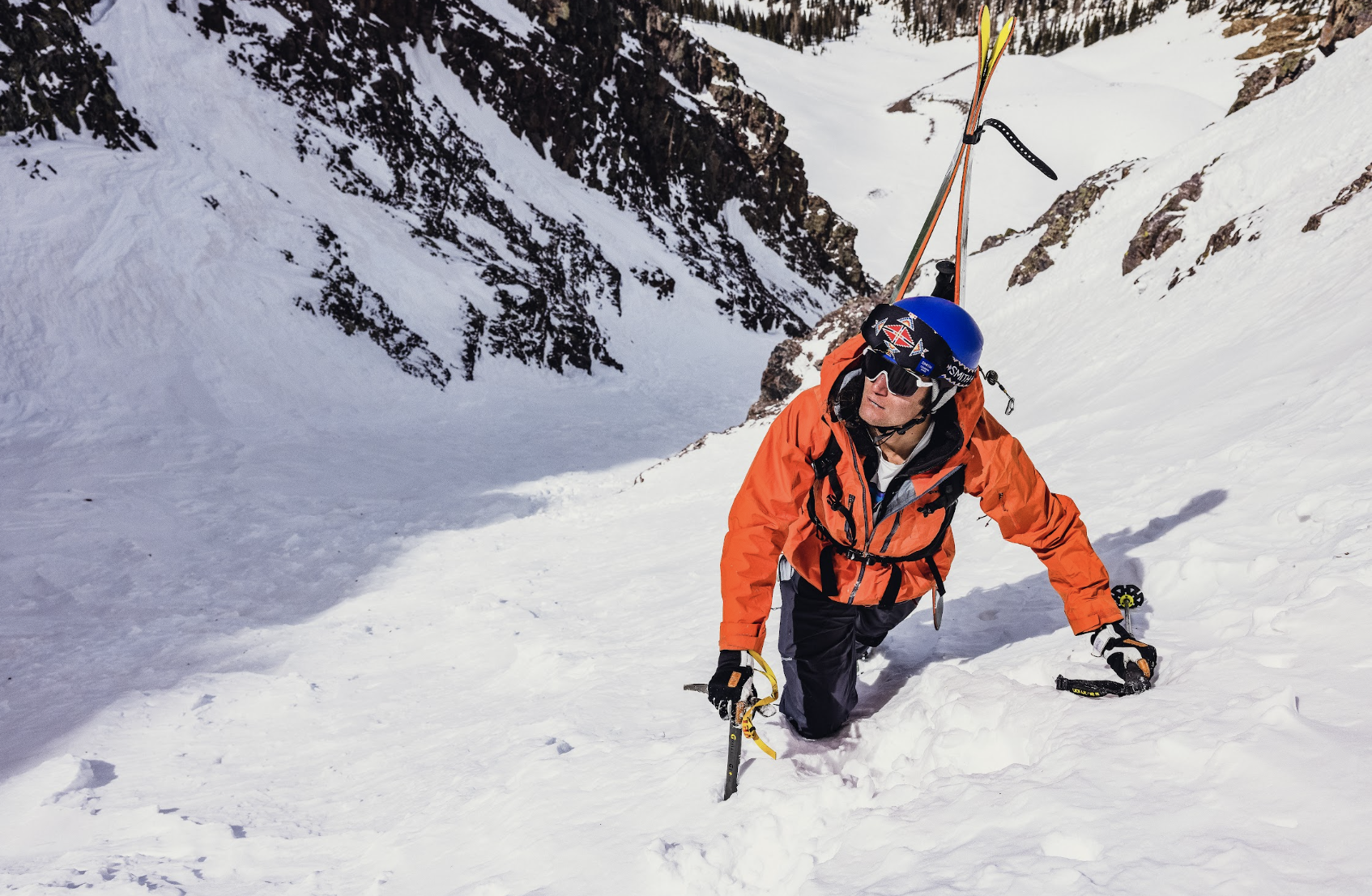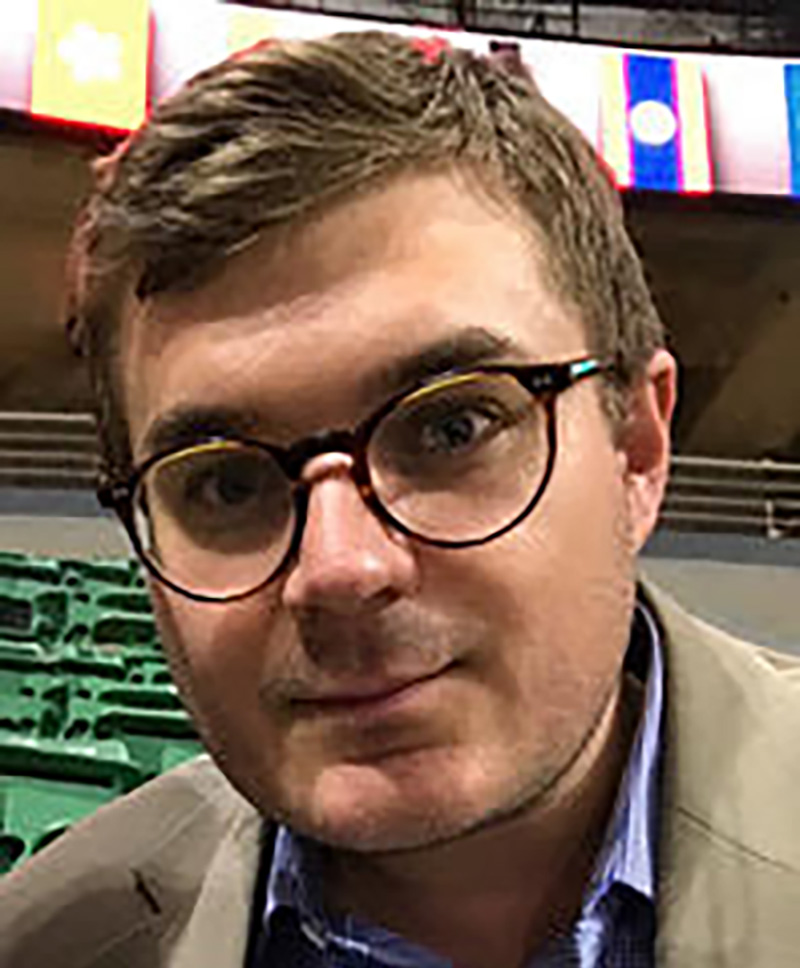
- Details
- By Ben Pryor
- Indigenous Entrepreneurs
Skier and storyteller Connor Ryan (Hunkpapa Lakota) is always on the go these days.
When I caught up with him recently, he was at another airport, getting ready to head back to southeast Alaska for a film project. This ski season, Ryan is splitting his time between Alaska and Colorado, where he is pursuing his passion for his dual pursuits of skiing and storytelling.
“Filming in Southeast Alaska has been a really rewarding experience, following the story of Ellen Bradley (Tlingit). She's a climate scientist, skier, and worthy of her whole story,” Ryan told Native News Online over the chaotic noise of the Denver International Airport.
“She’s been working with the Lingít Aaní tribal government and the Native Corporations to start a ski program specifically for Native youth in the Juneau area,” Ryan said. “Skiing in a rainforest is a whole opposite world than skiing in Colorado, but it’s been a pretty neat trip, culturally and community-wise. It’s not just about great skiing, but also meaningful threads in the story.”
In his early 20s, Ryan discovered a passion for skiing that would change his life. At the time, he was grappling with drugs, alcohol, and the weight of generational trauma.
Like many young Indigenous people, Ryan felt lost and uncertain about his future. Drugs and alcohol became his escape from the monotony of everyday life and the world’s problems. Looking back on that time, he remembers feeling adrift and lacking a sense of purpose, direction, and self-identity.
While skiing in the mountains, Ryan finally found the comfort and solitude he sought. The snow-covered peaks provided the solace he had previously sought through drugs and alcohol.
Growing up in Boulder, Colorado, Ryan had few coping mechanisms to deal with the challenges he faced. But he discovered a cultural connection and a renewed sense of purpose and direction through skiing.
Finding Purpose through Lakota Ceremony
When Ryan turned 21, he could finally afford his first pair of skis and a ski pass. Around this time, he felt a strong inner urge to reconnect with his Lakota heritage.
“I didn't feel like being Lakota and being a skier were two things that really merged. That changed for me once I started showing up in community … going to sweat lodge and especially after doing a traditional Lakota vision quest,” he said.
For Ryan, skiing is a form of dance and prayer. It serves as a unique ritual allowing him to establish balance in the natural world.
The traditional ceremonies helped lift the veil on Ryan’s mission.
“My purpose is to do something that serves all my relations, not just my community in the sense of Lakota people, but my community in the sense of the land that I love and how I'm connected to that,” he said. “It took having that cultural way of understanding. How I’m related to all those elements of life to get passionate about that and to understand that.
“As a Lakota person, I realize how specifically our ways of life are shaped by the environment that we came from. Because of that, I feel like we are the best stewards of the place we’re from. And so whenever I'm visiting, and I’m a guest on someone else’s land, I think about that.”
Lakota Environmentalism and Activism
“My biggest teacher so far has been learning from the land itself, but the more I listen to the land, the more it points me to the people,” Ryan said.
Ryan is part of the burgeoning movement of passionate outdoors people committed to preserving the land with Protect Our Winters. This community of athletes, scientists, creatives, and business leaders works to advance climate policies.
“There are certain actions we must take here that will make life possible in the future,” Ryan explained. “And there are certain actions that, if we allow them to happen, will prohibit that. So long as we live out of balance, with that understanding of what it really means to be related to a place, we’re going to continue to make life impossible in some of the places we want to live and appreciate the most. And I think Indigenous people should be the ones to lead the way on that.”
Ryan’s passionate advocacy for diversity and inclusion in the outdoor industry shapes the space meaningfully. Last summer, he was recognized by Outside Magazine as one of “The 20 Most Influential People in the Outdoor Industry.”
His work is captured in the film, “Spirit of the Peaks,” produced in collaboration with REI Co-Op Studios. Connor wrote, directed, and starred in the film that explores indigenous people’s deep spiritual connection to the land and natural resources and what that means to the modern skier.
Ryan’s work in the film industry catalyzes an important discussion about our responsibility towards places that hold spiritual significance and where we engage in recreational activities. His impact extends beyond sparking conversation; his efforts have generated funds for the Ute Mountain Ute Tribe and to support Indigenous skiers and snowboarders.
Through his work, he has earned sponsorships with the most influential leaders in the outdoor space, including Patagonia, Smith Optics, and Salomon. These resources give him a unique platform to speak about climate action, decolonization, and cultural appropriation.
Early this winter, Ryan collaborated with Smith Optics on a custom line of Lakota-inspired goggles.
The design of the goggle strap was crafted by artist Robert Iron Shield, affectionately known as “Little Bob.” The strap is more than a stylish accessory. The four lodges in the design represent the four directions, while the border depicts the mountains, and the blue symbolizes the water running down them.
The four directions hold immense spiritual significance in the Lakota way, and for Ryan, they are also the key to navigating the backcountry. The pattern symbolizes the sacred principles of Native culture and represents the intersection of culture and the outdoors.
 Connor Ryan and his Lakota-inspired SMITH goggles. (Photo Courtesy: SMITH Optics)
Connor Ryan and his Lakota-inspired SMITH goggles. (Photo Courtesy: SMITH Optics)
Indigenous Influence at Winter Park Ski Resort
Ryan has played a pivotal role in Winter Park Ski Resort’s efforts towards inclusivity seriously.
“Connor Ryan, Native skier and advocate, has been a vital partner for Winter Park as we’ve been on our own journey to be more aware and inclusive of all types of skiers, riders, and adventurers, and particularly Native and Indigenous skiers and riders,” said Winter Park representative Jenn Miller. “He can articulate so well the inherent connection we all have to the land on which we live and play, and he gives context to the feelings of awe, freedom, and gratitude being on Winter Park’s slopes.”
Winter Park Resort has a rich history and prides itself on honoring the land on which it operates. The resort’s Eagle Wind Territory features some of the most challenging black diamond backcountry terrains and is named after the land of the Arapaho Nation. The trail names in this territory, such as Thunderbird, Left Hand, Black Coal, Medicine Man, Little Raven, and Sharp Nose, honor significant figures from Arapaho history.
To ensure that each name is appropriate and meaningful, Arapaho elders visited the resort and consulted with planners. The stories of these figures are now a crucial part of the resort's history, adding depth and meaning to the ski runs.
Ryan also collaborated with Winter Park Resort on its land acknowledgment statement, which recognizes that the land on which the resort operates is historical and ancestral land originally belonging to native and indigenous people and nations, including Arapaho, Cheyenne, and Ute tribes.
“The ski industry and the outdoor industry need to reconcile with the fact that this whole industry happens on Native land,” said Ryan. “And there’s not blame in that statement, but there is a responsibility that’s needed on the other side.”
